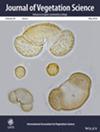Testing of Drivers for Plant Species Diversity Along Elevational Gradients on Seven Mountainous Islands in the Subtropics
Abstract
Aims
Geographic variation in species richness along elevational and latitudinal gradients may be controlled by energy, water, and productivity; however, spatial factors such as area and geometric constraints may also contribute. We use large mountainous oceanic islands, which exhibit considerable range in all proposed driver variables, to test established plant diversity models, such as the mid-domain effect (MDE), actual evapotranspiration (AET, energy), water–energy dynamics (WED: precipitation + potential evapotranspiration), and net primary production (NPP).
Location
We used published data comprising complete floras with elevation-specific occurrence information for seven mountainous oceanic islands (> 2000 m asl) in tropical and subtropical zones.
Methods
For each of the seven islands, plant richness was estimated within each 100 m elevation band (interpolated from maximum and minimum elevation). We used generalized linear models to evaluate the effects of area, MDE, AET, NPP (MODIS), and WED on each island and all islands simultaneously. The general WED model used in this study is a two-term model that includes a second-order polynomial function of PET and a linear function of precipitation. We use AIC and the proportion of explained deviance to identify the best model for explaining variation in plant richness along elevational gradients on mountainous islands.
Results
We found remarkably consistent patterns in which AET and MDE failed to offer a good explanation for species richness. WED was the best model when all islands were analyzed simultaneously; however, analyses on separate islands revealed that the precipitation term was not significant or negatively related to richness on five of the seven islands. The second-best model was NPP, whereas the best single predictor of richness was the polynomial expression of PET. The spatial variables, area, and the autocorrelated masl were strongly correlated with the residuals of the weak models.
Conclusions
Based on these observations, WED and NPP are superior in explaining richness on mountainous islands, whereas MDE and AET have low explanatory power. Precipitation has a negative correlation with species richness in five out of seven islands.

 求助内容:
求助内容: 应助结果提醒方式:
应助结果提醒方式:


